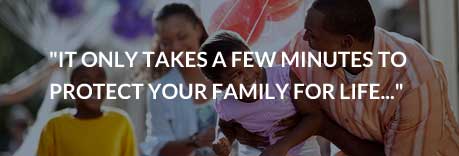The 10 Most Common Mistakes in Decision-Making
Decision-making is as complex as it is inevitable. And yet no one formally teaches us how to do it. In their latest book, Miguel Angel Ariño and Pablo Maella review the 10 most common errors that lead to bad decisions.
Are you too much of a perfectionist? Do you overestimate your abilities? Do you trust intuition too much? Are you overpowered by past decisions, even if they’ve been proven to be flawed?
Following the success of Iceberg Sighted: Decision-Making Techniques to Avoid Titanic Disasters, IESE’s Miguel Angel Ariño and Pablo Maella have published a new book on the 10 most common errors in decision-making.
The book’s authors offer an enjoyable analysis with many examples of the most common biases that lead to bad decisions. They home in on 10 mistakes we all make, so that we may learn to stop tripping over the same stones repeatedly.
1. Holding out for the perfect decision
Striving for perfection in our decisions adds unnecessary pressure and often leads to “analysis paralysis.” No one likes to be wrong, but we must shake our fear and accept that decision-making means taking risks: sometimes we’ll get it right, other times we won’t. Mistakes are a part of learning.
“I’ve failed over and over and over again in my life. And that is why I succeed,” boasts Michael Jordan, arguably the best basketball player of all time.
2. Failing to face reality
We tend to see things as we would like them to be, confusing wishful thinking with reality. For example, 75 percent of drivers think they are above average behind the wheel, which is statistically impossible.
Faced with a situation, we tend to take a stance and may fail to see beyond it, ignoring what might be better options out there. Furthermore, we tend to magnify the positive aspects of our stance and minimize the negative ones.
One good way to avoid this bias is to try and distinguish facts (objective) from opinions (subjective).
3. Falling for self-deceptions
The way we are presented with a situation, and the way we present it to ourselves, affects our final decisions. For example, when some cancer patients were told that the survival rate one year after a surgery was 68 percent, a significant percentage opted for that surgery. Meanwhile, when others were told that 32 percent of patients die within a year of the operation, no one elected to undergo it. The same information was given, just presented in a different way.
To avoid falling prey to self-deceptions, it is important to seek alternatives and consider them from different angles. Finally, sleep on it before making the decision.
4. Going with the flow
There is something worse than being wrong: being the only one who is wrong. Doing what everyone else does is easier and, more importantly, may save us from embarrassment. Hence our tendency to follow the herd, even if it is heading to a precipice.
We saw this with the dotcom bubble, for example. Everyone wanted to invest in tech companies when the bubble was inflating, even when most investors knew little about them.
The problem with imitation (and not thinking before deciding) is that we eliminate the possibility of finding wiser alternatives than what is fashionable.
5. Rushing and risking too much
Before deciding hastily, we should consider whether a decision is truly urgent. We tend to rush into things, crossing things off our list to feel accomplished. But all we’re really doing in a rush is taking unnecessary risks.
For example, the Chernobyl disaster was caused by an unnecessary test that simulated a power-failure at the nuclear power plant. By going through the motions for security testing, the outcome was exactly what they sought to avoid: the reactor exploded. There was no urgent need to run that test, but it happened anyway, risking far too much.
6. Relying too heavily on intuition
Intuition can be an asset, but when we allow it to outweigh analytical thinking, it leads to mistakes. What’s more, testing our hunches with low-cost experiments is important.
The authors offer Samsung chairman Lee Kun-hee as a cautionary tale. In the 1990s, he reportedly decided to get into automobile manufacturing because he “sensed” the market would take off in Asia. The project resulted in a loss of $2 billion and 50,000 layoffs.
7. Being married to our own ideas
It’s hard for us to change a prior decision, even if keeping the status quo is clearly inefficient or harmful.
The year 2003 saw the grounding of the Concorde, a supersonic jet airliner that was never profitable. But it took a fatal accident, with over 100 fatalities, to put it into permanent retirement. Economically speaking, the right decision should have been made long before then, but that meant acknowledging a failure. And no one likes doing that.
8. Paying little heed to consequences
Sometimes we don’t consider the consequences of a decision. Or we only consider the most direct and immediate ones, ignoring the side effects. And that can cause even bigger problems than the ones we were trying to solve in the first place.
That’s what happened to those in charge of the Titanic, who wanted to arrive at their destination 24 hours ahead of schedule in order to silence critics who claimed their large ship would be slow. They ignored warnings about icebergs, warnings that should have slowed them down for safety’s sake.
9. Overvaluing consensus
We often think group decisions are more effective, but that’s not always true. Reaching consensus also has its drawbacks: it may take longer, accountability tends to be diluted, and people may not say what they really think due to peer pressure or the desire to be accepted.
The latter may have occurred with the Kennedy administration’s botched Bay of Pigs invasion. What was supposed to be a surprise attack on Cuba turned out to be an open secret, the authors relate. Since no one wanted to appear to be a “dissident,” no one dared question the orders — even when the most sensible thing to do was abort the mission.
To avoid such a situation, remember to consult with people who hold different views and are willing to question our arguments.
10. Not following through
The decision-making process does not end with the decision: implementation and the monitoring of it are essential, too. However, some resolutions are not put into practice due to our own personal limitations (e.g., lack of willpower, commitment or time) or external factors (e.g., lack of authority or support).
For example, a multinational decided to establish a corporate headquarters for southern Europe. But the idea was eventually discarded in order to avoid upsetting any of the managing directors of the three potential host countries — ultimately causing damage to the whole enterprise.
It is vital to consider the implementation of a decision. And that means assessing our own ability to commit to a particular course of action and accepting that others will have their own interests and needs.
If we consider these common mistakes, our decision-making abilities will improve substantially.

7 Health Tips Every Woman Should Take to Heart
Many women fall into the habit of taking care of others’ health and wellness needs before they take care of their own.
But the fact is that you’re actually in a better position to provide care for the people most important to you when you make your own healthcare a top priority.
No matter what your age or overall health status is, these 7 health tips can help you increase your chances of better health throughout your life:
1.) Stop smoking. Doing so will greatly reduce your chances of developing lung and heart disease.
2.) Stay on top of your annual wellness checks*. This habit can increase the chances of early detection of disease or chronic conditions, which in turn increases your chances of doing something about any health problems you develop.
3.) Don’t skimp on sleep. Besides fighting the signs of aging, regular sleep promotes mental alertness and helps keep your stress levels in check.
4.) Avoid the sun during 10 a.m. and 2 p.m. When you do have to be outside, wear a broad-spectrum sunscreen with a SPF of 30 or higher.
5.) See your doctor every year. Even if you are feeling fine, regular wellness checks and health screenings can increase your chances of early detection of problems.
6.) Make physical activity* an important part of your life. Even if you only have time for 20 minutes of exercise a day, a lifelong habit of regular activity benefits your healthy heart and helps you stay on top of your weight and your stress levels.
7.) Make good nutrition a priority. Avoid crash diets or overindulgence in favor of a realistic diet that features plenty of fruits and vegetables.
MORE ABOUT NUTRITION:
Regardless of a woman’s age, nutrition experts generally recommend a diet that is focused on fruits, vegetables, fiber and protein. Your physician can direct you to appropriate resources- such as choosemyplate.gov – to help you tailor a diet that best supports lifelong health.
Women of childbearing age also need foods with folic acid (like leafy green vegetables, beans, and citrus fruits) to help prevent birth defects.
For women who have gone through menopause, it’s recommended that you increase your intake of foods with calcium and Vitamin D (such as seafood, fruit, low-fat dairy, and egg yolks) in order to prevent bone disease.
MORE ABOUT PHYSICAL ACTIVITY:
Throughout your life, a physical activity regimen that includes 20-30 minutes of daily cardiac activity (such as walking, running, swimming, hiking, or biking) is recommended for heart health, weight management, and stress reduction. Particularly as you get older, it may be beneficial to supplement your exercise routine with weight lifting or other strength training activities that help prevent loss of bone density and muscle mass.
The good news about exercise is that it’s never too late to start. Even if you’re past 50 and don’t have much of a history of physical fitness, you can still “start small” and work your way into a regular routine of exercise that helps you improve your overall health.
MORE ABOUT RECOMMENDED SCREENINGS:
Cholesterol and Blood Pressure: Women ages 20 and up should consider annual cholesterol tests and blood pressure checks a part of their regular health care routine. Your physician may recommend a more frequent schedule if you have a family history of problems in these areas or other risk factors.
Pelvic Exams and Pap Smears: Women ages 21-65 should have annual pelvic exams and a Pap smear at least every three years. These screenings may performed by your family medicine doctor or your OB-GYN.
Breast Exams and Mammograms: Generally, all women should receive a breast exam every year beginning at age 20. Most healthcare providers recommend annual mammograms from age 40-50, and every-other-year mammograms after that point. Also, you should get into the habit of monthly self-exams of your breasts. Your physician can show you the correct way to perform them.
Osteoporosis Screenings: Women 65 and older are at greater risk for problems with their bones, which is why most doctors recommend annual bone density screenings beginning at age 65.
Colorectal Screenings: Once you turn 50, ask your physician about recommended screenings (such as colonoscopies) for colorectal cancers and other potential problems.
Skin Cancer: Women of all ages should develop the habit of paying attention to changes in the skin or changes in moles and birthmarks. Be sure and report anything that seems different when you have annual wellness checks. If you have risk factors for skin cancer, such as a family history, fair skin, or a history of childhood sunburns, you should ask your physician if he or she recommends regular screenings.
Diabetes: Besides knowing the signs and symptoms of diabetes and managing your risk factors, you may need regular screenings from age 40 onward, depending on your family history and risk factors. Ask your physician for advice.
*Talk to your physician about recommended health screenings. Guidelines for health screenings vary and your physician may recommend a schedule that differs from the guidelines based on your medical or family history. Also, be sure to consult your physician before beginning any exercise routine.

Very few people enjoy packing. Stuffing clothes, toiletries and basically everything you need for a couple of weeks into a tiny space can be frustrating at the best of times. And with things like airline baggage limits, the pressure to pack more into less space has never been greater.
But it can be easy to pack if you know a few tips and tricks. The tips below can help basically everybody because everyone needs to travel now and then!
So if you want to pack with ease, fit more stuff in your bags, then simply read the tips in this article. You won’t believe you used to pack in any other way!

There’s one inevitable life-truth they don’t teach you in college: Adulting is really hard. Once you’re out of school, there’s a lengthy checklist of things you have to do to kill it in the adult world. Get a job. Find an apartment. Chip away at that student loan debt. Remember to pay those bills, bills, bills. Keep your chin up and your head on your shoulders. And, the one that’s probably the most annoying: Buy your own health insurance plan.
We get it. If you’re young and healthy, what’s the point of throwing away hard-earned cash on health insurance? Truth be told, if you don’t buy a health plan, you could still get hit with thousands of dollars in medical bills if an unanticipated health issue occurs.
It’s important to know your options and check off this major to-do. But don’t worry – we’re here to help. Here’s how to get health insurance as an adult.
The four phases of health insurance adulting
In health insurance terms, age isn’t just a number. It determines exactly the kind of health plan you’re eligible for, which can save you money. Here are some important health insurance milestones you need to be aware of:
| The Four Phases of Health Insurance Adulting | |||
| If youre 18-25 | If you’re 26+ | If you’re 30+ | If you have a full time job |
| Stay on your parents plan: you can remain on a family plan until you turn 26. | Buy a catastrophic plan: It has a low premium, high deductible plan offers bare-bones benefis designed for healthy persons under 30. | Find new insurance: if you had a catastrophic plan, your insurer will automatically move you into a new plan with similar benefits when you turn 30, but feel free to shop around. | Sign up for a plan through work: Most employers provide group health insurance and often subsidize the cost of monthly premiums. |
| Get insured through school: many colleges offer affordable student health plans. | Apply for a rider: In some cases, you can stay on your parent’s plan after age 26. | ||
Your options for health insurance coverage
When it comes to obtaining health insurance coverage, you’ve got options. Depending on your current life situation (employment, income, age), how you sign up for health coverage can save you cash in the long run. Here are your options:
- Stay on your parent’s plan. We know you want your independence, but if you’re under 26, this is one of the cheapest options for you to remain covered. Family plans tend to have more extensive coverage than catastrophic plans, which cover the cost of care in the event of an emergency.
- Use your student benefits. Full-time students may have the option of obtaining coverage through their university. If you’re currently in school, talk to your admissions office about how to get coverage. This may be particularly useful if you go to school out of state. Most health insurance plans only offer full coverage in the state where you live. If you regularly see a doctor, then it might be wise to get covered on your school’s plan.
- Have your boss pick up the tab. Now that you’ve landed a sweet gig to pay the bills, check with your employer to see if they offer health benefits. Many companies chip in to pay part of your monthly premium costs, and some will even cover the full amount. Either way, you’ll still be responsible for paying your deductible, copayments and coinsurance, and other health care costs until you reach your out-of-pocket max.
- Buy your own plan through a health insurance company or broker. If you’re not eligible for subsidies, you can purchase insurance directly through Star General Health & Life Insurance Agents & Brokers Ltd.
Start shopping.
Now that you know your options, it’s time to start shopping for a plan. But before you do, you’ll want to collect some information.
First, find out the details of your current insurance plan, including the company, plan type, and covered doctors. If you’re happy with your current docs, you’ll want to find a new plan with similar coverage.
Next, obtain a record of your income from last year, and consider what you expect to make this year. This information is essential when you’re applying for coverage.
Finally, figure out your health care needs and current spending so you can pick the plan that will save you the most money. If you go to the doctor frequently, then you might want to select a plan with a higher premium and lower deductible. If you’re healthy and don’t see a doctor often, then a catastrophic plan might be your best bet if you’re under 30.
Adulting can be overwhelming at first, but once you get into the swing of it, it’s a cinch.


242-461-0300 (Nassau) or 242-688-7827 (Freeport)
or contact us by email here or on our live chat below

